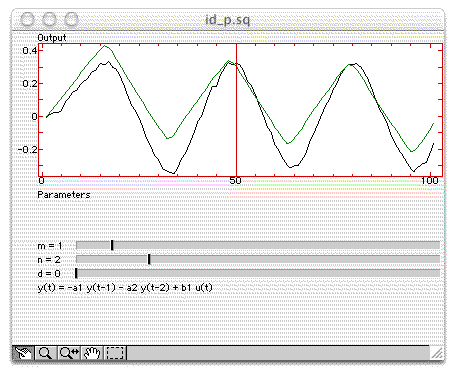Sysquake Pro – Table of Contents
Sysquake for LaTeX – Table of Contents
id_p.sq
Parametric identification

First contact
SQ file id_p.sq provides the identification methods to obtain an ARX parametric
model based on the measured input and output of an unknown system
For didactic purposes, synthetic data can be created for input
The parameters of the following model are identified:
![]()
where
Settings
Create Synthetic Data
Synthetic data are created from scratch. A dialog box allows to choose the number of samples.
Read Data File
The measurements are read from a text file, typically created by an acquisition program. This file should contain an array of two column (separated by spaces or tabulators) by n row (separated by carriage returns and/or line feeds). The first column corresponds to the system input, and the second column to the system output. Each row corresponds to a sample.
Model Degree
Samples Used For Identification
Not all samples are used for identifications. Remaining samples are useful for validating the model (cross-validation). The number of samples used for identification can also be set by manipulating the red vertical line in figure "Output".